Documents > Generate documents
Digital signatures
Connect Tallyfy to e-signature services like DocuSign or HelloSign through middleware tools - when someone completes a workflow step, documents automatically go out for signing. No manual work. Most teams save 15-20 minutes per document1.
Simple.
- A Tallyfy account with webhook access
- A middleware account (Zapier, Power Automate, or Make.com work great)
- An e-signature service account (DocuSign or HelloSign)
- A document template ready in your signature service
- Create a workflow in your middleware tool that can receive information from Tallyfy.
- Set up a Tallyfy Process with form fields to collect the info your document needs - name, email, contract terms, whatever you’re working with.
- Set up a webhook in a specific Tallyfy step to send that collected information to your middleware tool.
- Connect your e-signature service to your middleware tool.
- Test everything and turn on the automation.
This shows the complete automation pathway from workflow completion to signed document tracking.
What to notice:
- Steps 2-3: The webhook fires instantly2 when someone completes a Tallyfy step - no delays or manual triggers needed
- Step 4: Middleware handles all the field mapping automatically - you set it up once and it works every time
- Steps 7-8: The optional return path creates a complete loop - Tallyfy knows when documents get signed without you checking
Here’s how this works in most middleware platforms:
- Start creating a new workflow in your middleware tool (called a “Zap” in Zapier, “Flow” in Power Automate, or “Scenario” in Make.com).
- Choose “Webhooks” as the starting trigger (all major platforms have this option).
- Select “Catch Hook” or “When a HTTP request is received” as the trigger event.
- Your middleware will give you a unique web address (URL). Copy and save this URL - Tallyfy needs it to know where to send your information.
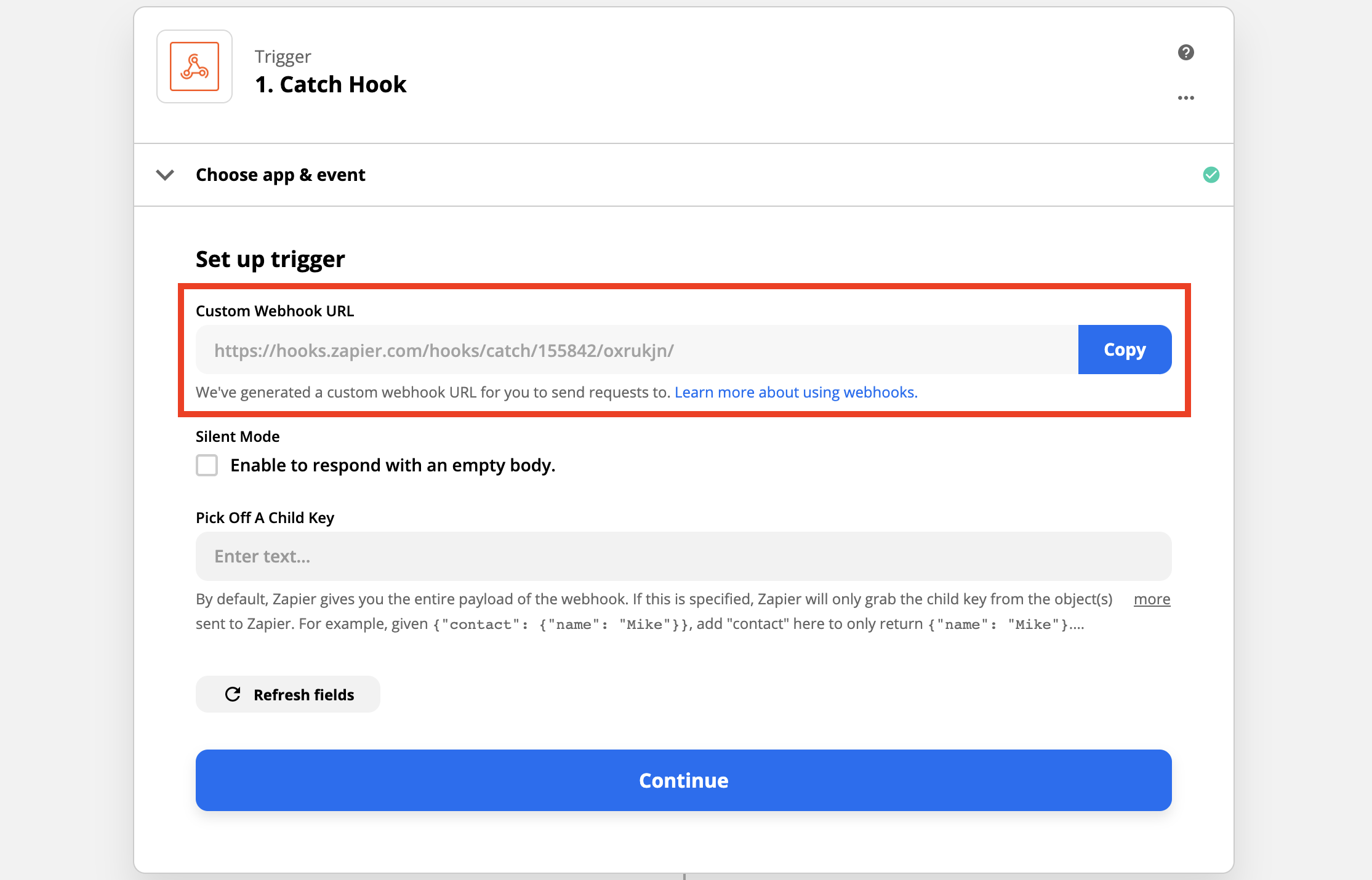
- Create or edit a procedure template in Tallyfy.
- Add form fields to collect all the details your document needs. Think client name, email address, contract details - whatever information needs to appear in the final document.
- Pick the step where you want document signing to trigger. When someone completes this step, the signature request goes out automatically.
- Add the webhook URL (remember that web address from Step 1?) to this trigger step:
- Click the settings icon for that step.
- Go to the Webhooks tab.
- Paste the URL you copied from your middleware tool.
- Choose which form field data Tallyfy should send to the webhook URL.

Time to link everything together. You’ll do this inside your middleware tool.
- First, make sure your document template is ready in HelloSign. You need all the signature fields and data spots marked out.
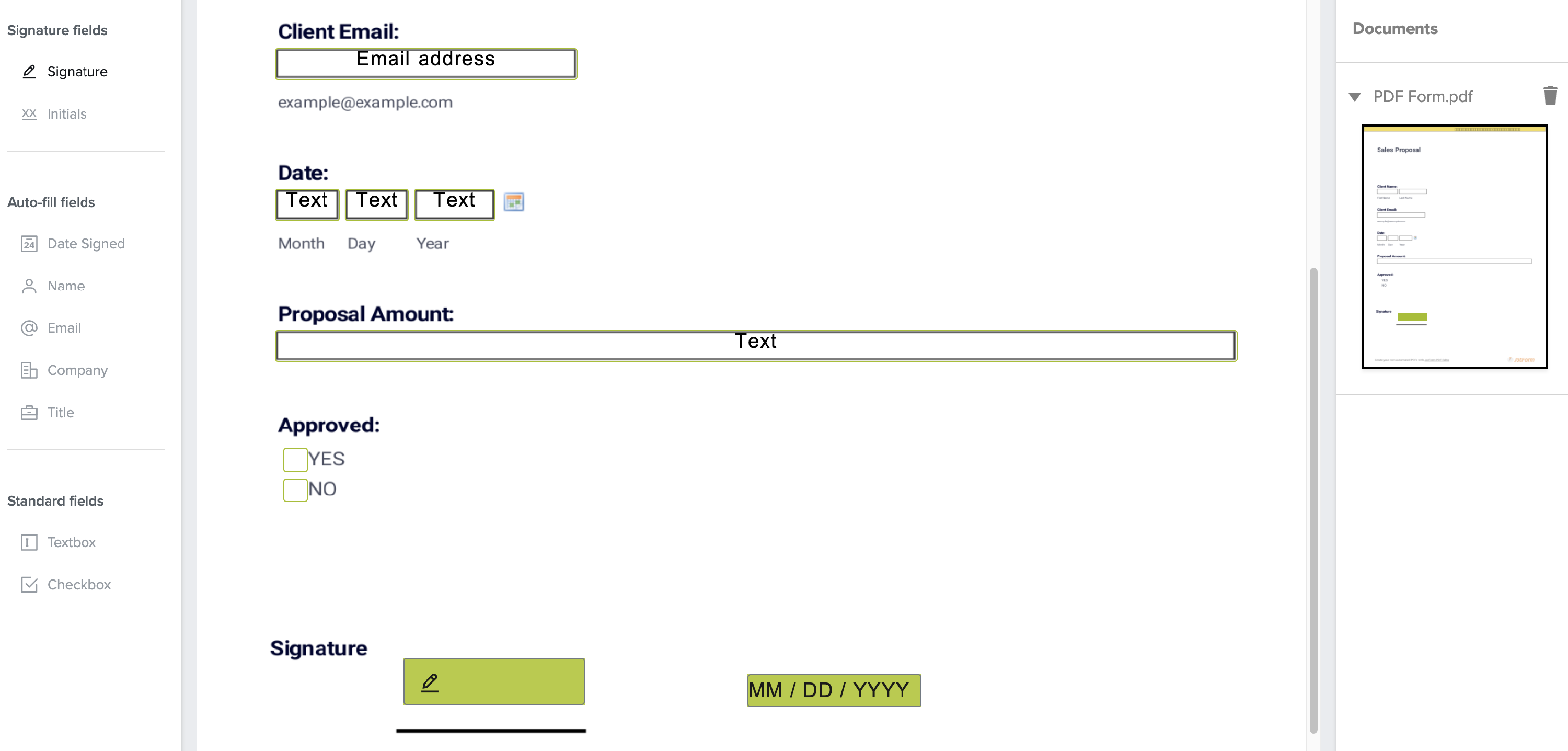
- In your middleware workflow, add a HelloSign action step right after the webhook trigger.
- Choose the action “Send Signature Request From Template”.
- Select the HelloSign template you prepared.
- Here’s the fun part - match the information coming from Tallyfy to the correct fields in your HelloSign template. Tallyfy’s ‘Client Name’ field? That goes to HelloSign’s ‘Signer Name’ field. And so on.
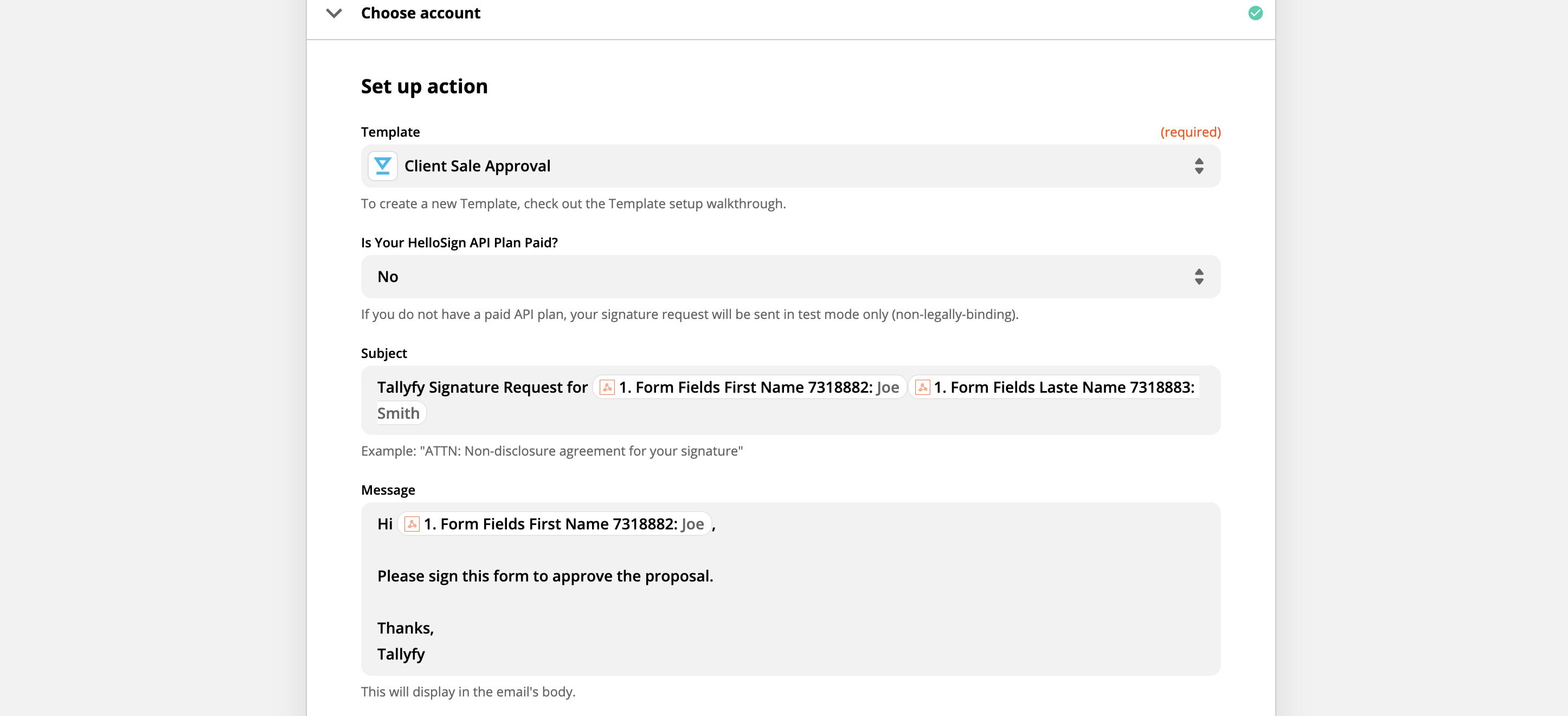
- Same deal with DocuSign - get your document template ready with all the signature and data fields marked.
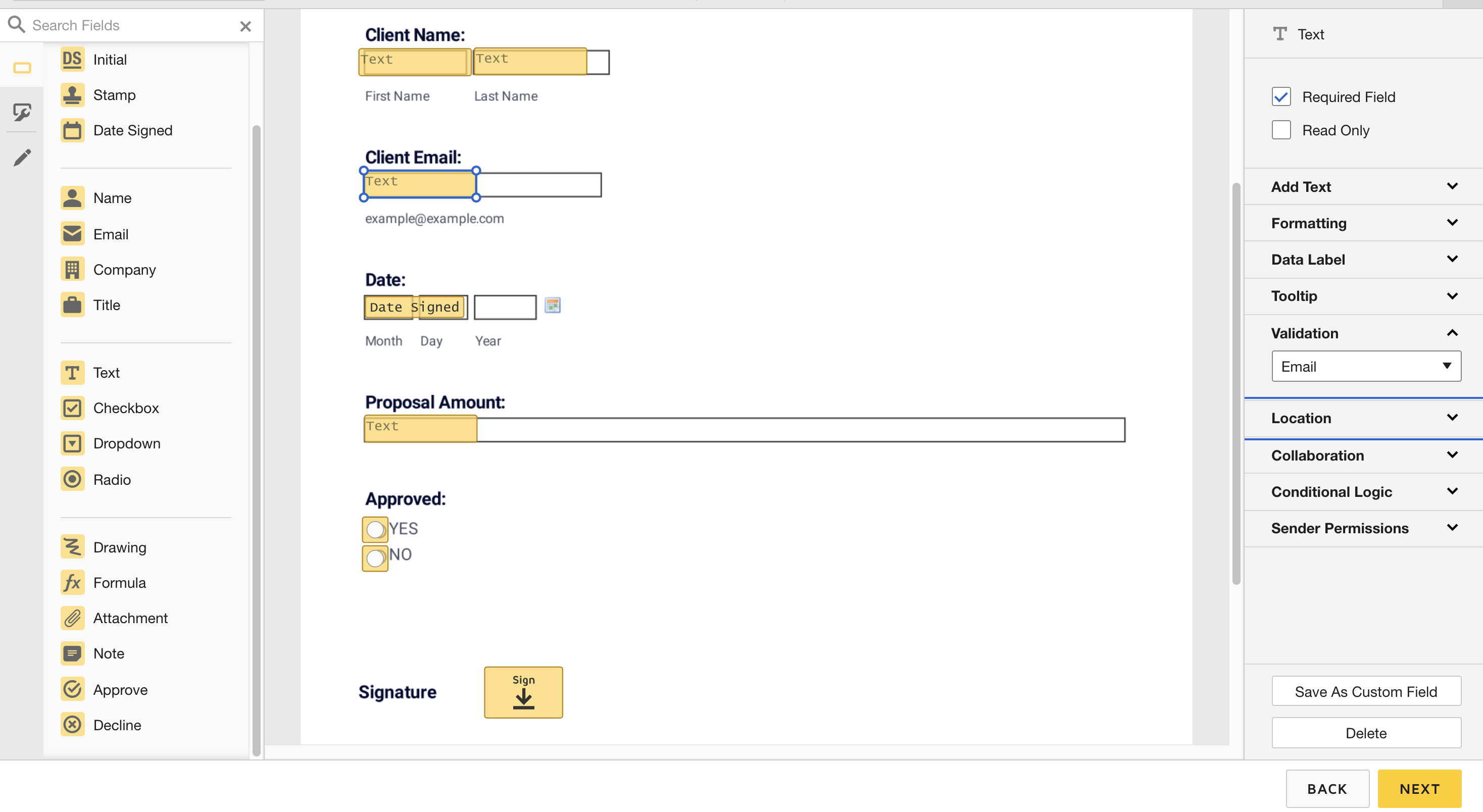
- In your middleware workflow, add a DocuSign action step right after the webhook trigger.
- Choose the action “Create Signature Request”.
- Select the DocuSign template you prepared.
- Match up the Tallyfy information to your DocuSign fields. It’s like connecting the dots - each piece of data from Tallyfy finds its home in the document.
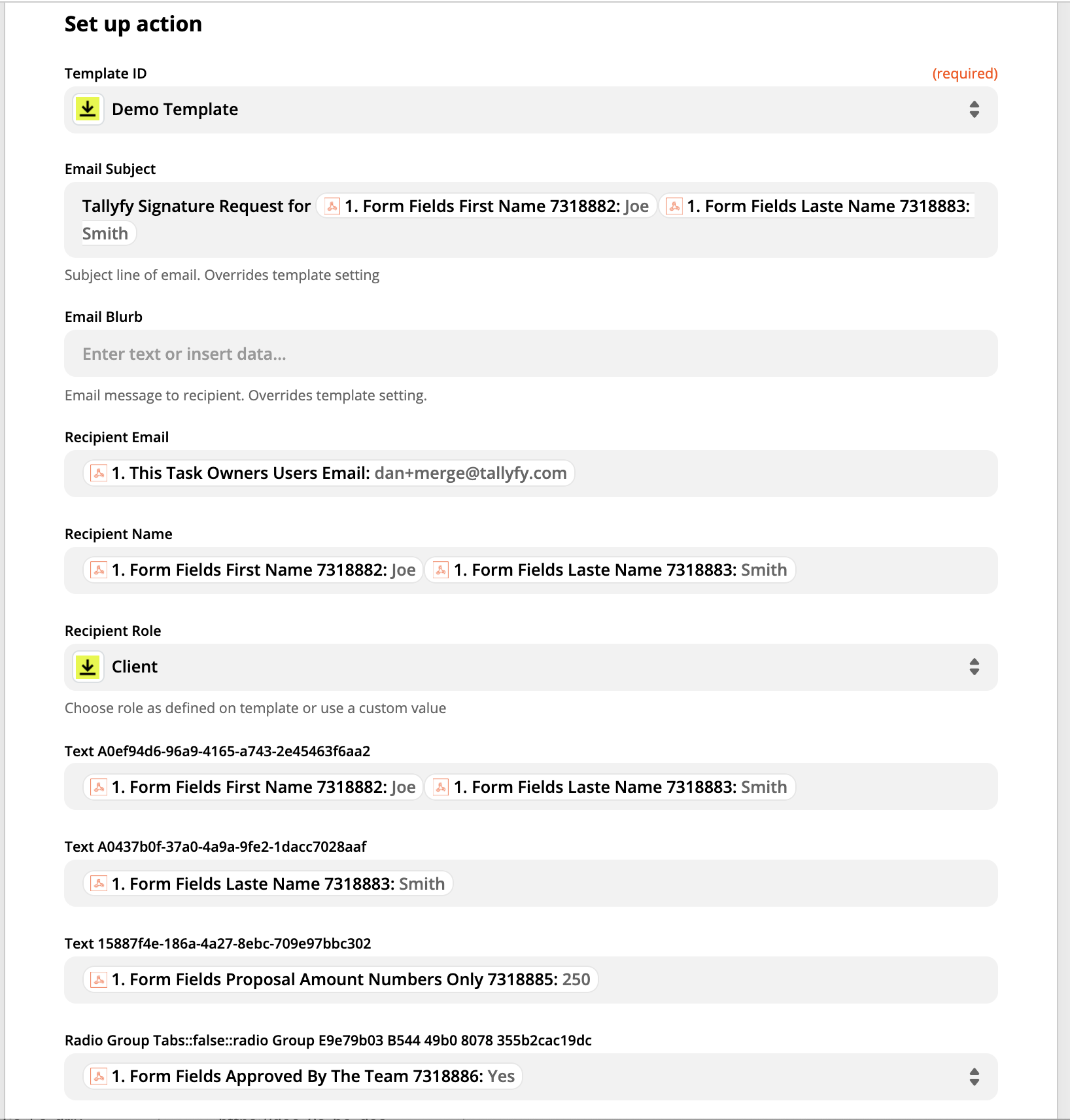
- Test your middleware workflow. Make sure everything connects properly before going live.
- Launch your Tallyfy process with some test data - use your own email if you want to see it work firsthand.
- Complete the Tallyfy step that has the webhook attached.
- Check your email. Did the signature request arrive? Perfect.
- If everything works (and it should), turn on your middleware workflow. Each platform has its own way to activate workflows - look for “Publish”, “Turn On”, or “Activate”.
Want the full automation experience? You can set up a return path so Tallyfy knows when documents get signed:
- Create a second workflow in your middleware tool. This one starts when your e-signature service reports “document signed.”
- Set up this workflow to use the Tallyfy API (basically a way for programs to talk to each other) to find the right Tallyfy task and mark it complete.
- You’ll need three specific IDs from Tallyfy:
- Your unique Organization ID (it’s in Tallyfy settings).
- The Process ID for the specific process instance that was launched.
- The Task ID for the task you want to mark complete.
Here’s what happens when it all comes together:
- Someone completes a Tallyfy step - document goes out for signing. No waiting around.
- Recipient signs the document.
- Tallyfy updates instantly to show the signing task is done.
That’s it. Your signing workflow runs itself.
Webhooks > Send emails using webhooks
Middleware > Integrate to your CRM or ERP
Triggers > Launch via middleware
Was this helpful?
- 2025 Tallyfy, Inc.
- Privacy Policy
- Terms of Use
- Report Issue
- Trademarks